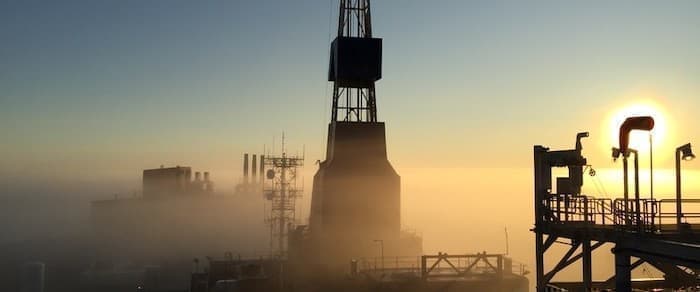It would have been unthinkable a few months ago: ramping up production was the last thing U.S. shale drillers would do amid a hesitant price recovery and heavy uncertainty around demand recovery. In these few months, however, a lot has changed. Now, U.S. shale drillers may be ready to get back to drilling. The current situation in U.S. oil is one that shale companies must have dreamed about during the worst of the crisis. Inventories are down considerably, thanks to recovering demand. But they are also down due to the recent shut-ins of offshore production thanks to Hurricane Ida.
On top of that, the shale industry's own inventory of drilled but uncompleted wells (DUCs) is also down considerably, Reuters has reported, citing analysts and industry insiders.
This means that soon, we could see a more sizeable increase in the U.S. rig count as shale producers seek to avert a decline in production. It also means that shale companies might see some renewed investor criticism because drilling more would require higher spending, and investors have been extra-sensitive towards spending recently.
They could hardly be blamed for this sensitivity. Investors in the shale oil industry have endured years of low returns while the companies they invested in poured everything into pumping as much oil as they possibly could. This all came to an end not once but twice, the second time in a more painful way as the pandemic turned what would have otherwise been a regular oversupply crisis into the mother of all oversupply crises, plunging the U.S. oil benchmark below zero for the first time ever.
After the worst was over, oil companies began redirecting what cash they had towards dividends to keep investors happy. They also became a lot more disciplined with their money in the face of an uncertain future. However, shale oil production is an intensive process: wells are quick to start producing but also quick to deplete, which means drilling is more frequent than it is in conventional oil production, hence the new development.
For months, shale oil companies drew on their DUC inventory, which was high enough to keep spending within strict limits, Reuters notes in its report. But now, this inventory is down to below 6,000 as of July, from some 8,900 in 2019, and drilling needs to start again. Putting DUCs into operation costs about 60 percent of what it costs to drill a whole new well. Fortunately, oil is trading high enough to soften the blow to investors who are likely to be suspicious about any news regarding higher spending.
Another thing that could soften this potential blow is the fact that U.S. shale drillers are actually generating quite a lot of cash, according to industry veteran David Messler. In a recent article for Oilprice, Messler wrote that many shale companies are enjoying cash generation that significantly exceeds their dividend needs. This would put these companies in a comfortable position concerning the need for a production boost. As long as new well drilling does not require taking money away from investors, everyone should be happy.
There have been more efficiency gains, too, and this is another plus for shale companies looking to both ramp up production and keep their investors satisfied. As Argus reported at the end of August, citing the CFO of Diamondback Energy, some shale companies now need fewer rigs and smaller crews to drill the same number of wells. The report also cited gains in well productivity, citing EIA data that showed new well production exceeded the rate of depletion in legacy wells.
Related: Exxon Makes 20th Significant Crude Discovery Off Guyana
U.S. crude oil production over the past four weeks has averaged a little over 11 million bpd, according to the latest weekly petroleum report of the Energy Information Administration. This compares with 10.3 million bpd a year ago. Output is growing and, according to the International Energy Agency, is set for stronger growth next year, too, with U.S. shale accounting for some 60 percent of total non-OPEC production growth next year.
Now, this could have an undesirable—for the industry—impact on prices and likely will. According to the Oxford Institute for Energy Studies, "As we enter 2022, the US shale response becomes a major source of uncertainty amid an uneven recovery across shale plays and players alike. As in previous cycles, US shale will remain a key factor shaping market outcomes."
On the other hand, U.S. shale has proved it can be flexible, and in case of further resurgences of the coronavirus or other demand-hurting events, it could respond pretty quickly. Shale companies also appear to be quite comfortable with the current price levels, and with investors still sensitive, they are unlikely to jeopardize their new cash-generating abilities by boosting production excessively. It seems the times of pumping as much as possible because you can could be over for good.
By Irina Slav for Oilprice.com
More Top Reads From Oilprice.com:
- OPEC+ Ignores Biden, Keeps Output Plans Unchanged
- How To Capitalize On Guyana’s Oil Boom
- 3 Distinct Futures For The Oil Industry



















The name of the game for them is for them, therefore, to continue paying their huge debts and produce profitably and responsibly.
They should also be aware that their fate is in the hands of OPEC+. If they try to wreck the oil price rally through reckless production, they will be brought down again to the brink of collapse and bankruptcy by OPEC+ pursuing a market share strategy and flooding the markets leading to a collapse of prices below the breakeven ones of the majority of shale drillers.
Dr Mamdouh G Salameh
International Oil Economist
Visiting Professor of Energy Economics at ESCP Europe Business School, London